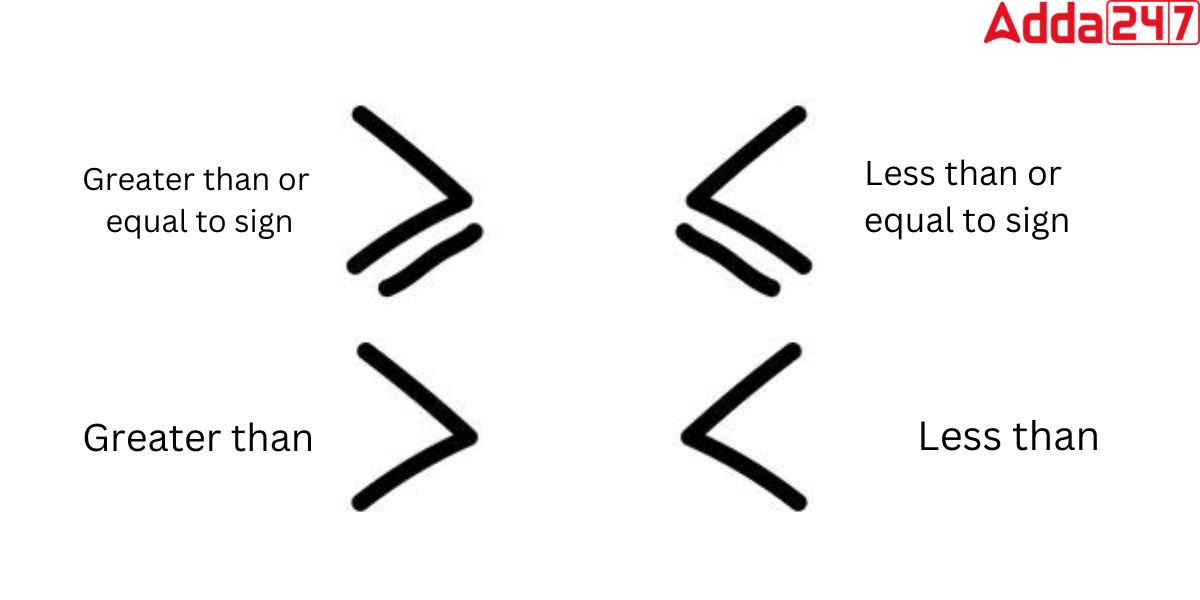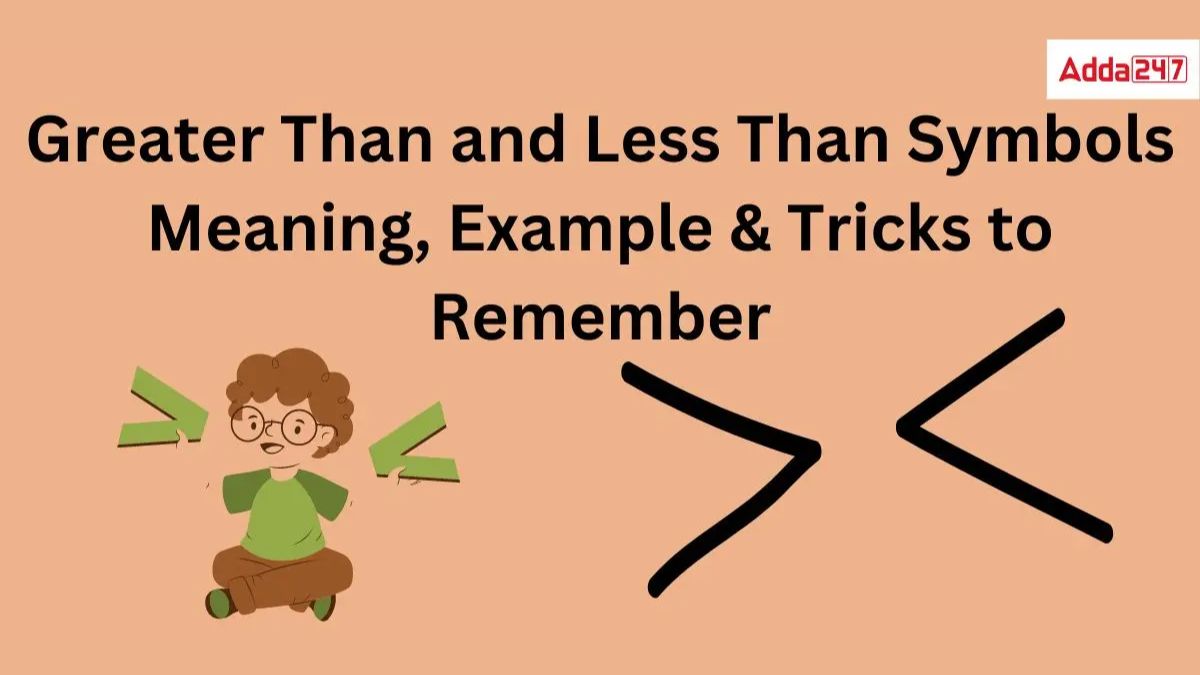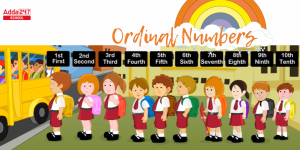Learn Greater Than and Less Than, Equal to Sign and Symbols with images and a detailed explanation here. Many students these days try to grasp the essential concepts of modern mathematics, such as Greater Than and Less Than Signs, yet the traditional textbooks are difficult for them to understand. This is why students use technology and internet resources to better understand the idea. If you’re looking to learn the fundamentals of Greater Than (greater than symbol) and Less Than Symbols, you’ve come to the right place. Please stick with us until the end of this post, as we will go over all of the easiest ways to explain the greater than and less than symbols in mathematics, as well as the equal to symbol.
Greater Than and Less Than Sign
Mathematicians use greater than (>) and less than (<) symbols to compare two integers or expressions. Imagine an alligator’s mouth. The wide-open part of the sign is always facing the larger number, just as an alligator would want to consume it!
The greater than symbol (>) shows that the number on the left is larger than the number on the right. For example, 5 > 3 indicates that 5 is greater than 3, On the other hand, the less than symbol (<) indicates that the number on the left is smaller than the number on the right side. For instance, 2 < 4 indicates 2 is less than 4.
Less Than, Greater Than and Equal to Signs and Symbols
Mathematics may occasionally appear as a distinct language, filled with symbols and regulations that can be challenging to grasp initially. Yet, after you familiarize yourself with a few fundamental symbols, such as the less than (<), greater than (>), and equal to (=) signs, mathematics transforms into a much simpler and enjoyable experience! In this article, we will examine these three vital math symbols, clarify their meanings, and demonstrate their usage in daily scenarios.
Greater Than and Less Than Symbols Meaning in Maths
The Meaning of the Greater Than and Less Than Symbols in Maths is exactly the opposite or vice-versa. Although You may assume the meaning of these Greater Than and Less Than signs by looking at their symbols. (>,<). The Definition of Greater Than (more than symbol) and Less Than Symbols explained in detail with the example below.
Greater Than Symbol (More Than Sign)
The greater than symbol (>), also called the “greater than sign”, is a mathematical symbol that is used to compare two values. The symbol looks like a small arrow pointing to the right and is usually used between two numbers, like this: 3 > 2.
This means that the first number (3) is greater than the second number (2). When two values are compared using the greater than symbol, the result is either TRUE or FALSE.
If the first value is greater than the second value, the result is TRUE. If the first value is not greater than the second value, the result is FALSE.
Greater Than Symbol Examples
The “greater than symbol (>)” is used to show that one number or quantity is larger than another. Here are some examples:
Comparing Numbers: 7>3: This means 7 is greater than 3.
15>10: This indicates 15 is greater than 10.
Decimals and Fractions: 0.75>0.5: Here, 0.75 is greater than 0.5.
: The fraction (or 0.75) is greater than (or 0.5).
Negative Numbers: −2>−5: In negative values, -2 is greater than -5 because it is closer to zero.
Variables:
If x=10 and y=7, then x>y.
Inequalities: x>5: This means
𝑥
x can be any number greater than 5.
y>−3: This indicates
y can be any number greater than -3.
These examples show how the “greater than” symbol works across different types of numbers and in various mathematical contexts.
Less Than Sign
It is just opposite of the greater than symbol in physical presence. The less than symbol (<) is a mathematical operator that indicates that one value is less than another value. It is typically used when comparing two numbers. For example, the following inequality shows that 5 is less than 10:
Less Than Symbol Examples
The practical example of less than symbol has been given below.
5 < 10
The less than symbol can also be used to compare other values, such as variables or expressions. For example, the following inequality shows that x is less than y:
x < y
Greater Than or Equal to Sign
The “greater than or equal to” sign is written as ≥. In mathematical notation, a ≥ b means that a is either greater than or equal to b.
Less Than or Equal to Sign
The “less than or equal to” sign is written as “≤” and is used to indicate that one value is either less than or exactly equal to another value. In mathematical notation, you write: a≤b
This means a is less than or equal to 𝑏.
Pictures of Greater Than or Equal to Sign and Less than or Equal to Sign
check how Greater Than or Equal to sign and less than or Equal to symbols look like.

Greater Than and Less Than Signs: Tricks to Remember
There are the three methods to remember greater than and less than symbols.
- Alligator Method
- L Method
- Points Method
- Alligator Method
The alligator method is a simple way to help students remember the difference between the greater than and less than symbols. Here’s how it works:
As we all know crocodile always open mouth to eat more fishes so we consider > symbol as crocodile and numbers on both sides as fishes.When we put the alligator mouth in front of the numbers, we can see which number is larger and which number is smaller.
For example, if we put the alligator mouth in front of the numbers 5 and 3, we can see that 5 is greater than 3 because the alligator’s mouth is open wide.
For example, if we put the alligator mouth in front of the numbers 5 >3, we can see that 5 is greater than 3 because the alligator’s mouth is open wide.
- L Method
The L method is an often-used way to remember greater than (>) and less than (<) signs. To do this, imagine that the greater than sign looks like a “less than” sign lying on its side.
The less than sign can then be thought of as two backwards Ls with the top end being higher. You can also see the spelling of Less is starting from L. So you can remember the less than symbol by using L Method.
- Points Method
You can easily remember the Greater Than symbol and the Less than symbol by using the placement. Here we are telling you how to remember these symbols using point method.
Greater than Symbol
The symbol to the left, consisting of two points, is the greater than sign (>). It indicates that one value is larger than another.
Less than symbol
The left side of the symbol has one point and the right side has two, representing Less Than (<).
Greater Than and Less Than Symbols with Examples
This is a list of all of the mathematical symbols you might need for typesetting mathematics.
| Greater Than (more than symbol) and Less Than Symbols Examples | ||
| Symbol Description | Symbol Notation | Example |
| Greater than sign | > | 8>5 |
| Less than sign | < | 3<9 |
| Equal to sign | = | 3=3 |
More Than and Less Than Signs Main Differences
Most of the candidates find difficulties while tackling problems with the greater than sign and the greater than or equal to sign and the less than sign and the less than or equal to sign. to overcome this problem they should understand the differences between those signs.
Difference between the greater than sign and the greater than or equal to sign
Answer. The greater than sign (>) indicates that the first value is strictly greater than the second value, & the greater than or equal to sign (≥) indicates that the first value is either greater to the second value or equal to it.
Difference between the less than sign and the less than or equal to sign
The less than sign (<) indicates that the first value is strictly less than the second value, while the less than or equal to sign (≤) indicates that the first value is less than or equal to the second value.
Tricks to Remember Greater Than and Less Than Sign
Even though the greater than and less than symbols have distinct meanings, they may be somewhat challenging to recall. To help students remember these signs, students should use any one of the following two methods.
1. Alligator Method
A great method to remember the greater than and less than symbols is to envision them as tiny alligators (or crocodiles), with the figures on each side symbolizing a quantity of fish. The alligator consistently aims to consume the greater quantity of fish, so whichever count the mouth faces is the greater quantity.
2. L Method
This approach is quite straightforward—“less than” begins with an L, therefore the symbol that resembles an L the most is the one that represents “less than.”
< resembles an L more than >, therefore < signifies “less than.” Since > doesn’t resemble an L, it cannot represent “less than.”
Greater Than and Less Than Symbols Simple Examples for Kids
These are the example of greater than symbol and less than symbol:
- 2/3 < 1 – This means that two-thirds is less than one.
- 5 + 2 > 6 – This means that five plus two is greater than six.
- 3x – 5 > 10 – This means that three times x minus five is greater than ten.
- 7y – 3 < 20 – This means that seven times y minus three is less than 20.
- 2x < x + 5 – This means that two times x is less than x plus five.
- 4z + 2 > 10 – This means that four times z plus two is greater than ten.
- 1/2 < 3/4 – This means that one-half is less than three-fourths.
- 8m > 24 – This means that eight times m is greater than 24.
- 5x – 2 < 13 – This means that five times x minus two is less than 13.
- 2a + 3b > 10 – This means that two times a plus three times b is greater than 10.
| Related Posts | |
| All Mathematical Symbols | Descending Order |
| All Algebraic Identities | All Maths Formulas |









 XXV Number- XXV Roman Numerals Definitio...
XXV Number- XXV Roman Numerals Definitio...
 Ordinal Numbers: Meaning, Examples, Appl...
Ordinal Numbers: Meaning, Examples, Appl...
 Compound Interest Formula, Definition, E...
Compound Interest Formula, Definition, E...














